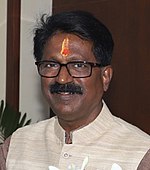Al Sa'adah Towers
2019 establishments in IndiaBuildings and structures in Mumbai

Al Sa'adah Towers are twin high rise buildings in the Bhendi Bazaar neighborhood of Mumbai, India.
Excerpt from the Wikipedia article Al Sa'adah Towers (License: CC BY-SA 3.0, Authors, Images).Al Sa'adah Towers
Ebrahim Rehmatullah Road, Mumbai Zone 1 (Mumbai)
Geographical coordinates (GPS) Address Nearby Places Show on map
Geographical coordinates (GPS)
| Latitude | Longitude |
|---|---|
| N 18.959411111111 ° | E 72.831555555556 ° |
Address
Ebrahim Rehmatullah Road
Ebrahim Rehmatullah Road
400039 Mumbai, Zone 1 (Mumbai)
Maharashtra, India
Open on Google Maps







